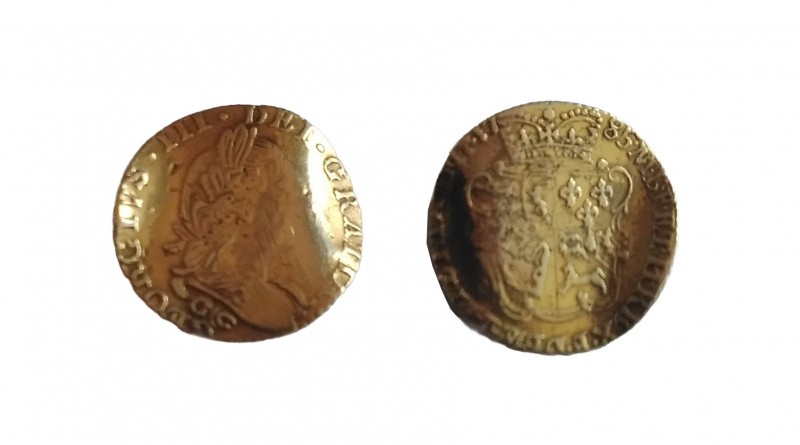George III half guinea forgery
Brian Mansfield said this find sparked quite a debate when it appeared on the Metal Detecting Forum. As can be seen from the illustrations, it appears at first sight to be a Georgian gold coin dated 1785.
The coin measures 20mm in diameter,and weighs 4.10 grams. The size is correct for a George III half guinea and the weight close to that of a genuine coin. There was some debate about whether or not the coin was genuine, in part because it had been folded and it had a silvery tint on the high points.
The ‘folds’ have turned the coin into a love token. It would seem that the 18th century encompassed a very romantic period. Lots of coins were turned into love tokens by bending them into a shape roughly resembling a letter S. William III sixpences were the favourite coins to be treated in this way; however, other silver coins were used occasionally, as were copper coins and a few made of gold. A token was presented to someone and if the love or affection was reciprocated the token would be kept; if the receiver didn’t care for the presenter then the token would be thrown away. They are so common as detecting finds that there must have been a very large number of lovesick individuals during the 18th century.
I’m of the opinion that this ‘half guinea’ is a forgery. This has nothing to do with the bends but everything to do with the very crude dies used to strike the coin. Compare it with this genuine 1785 half guinea and you will see what I mean.
The core of Brian’s coin is probably silver, which has been covered by a thin layer of gold.
Using a fake coin is probably not the most appropriate way to demonstrate your true love. However, it’s a very interesting curiosity although of not much commercial value.


